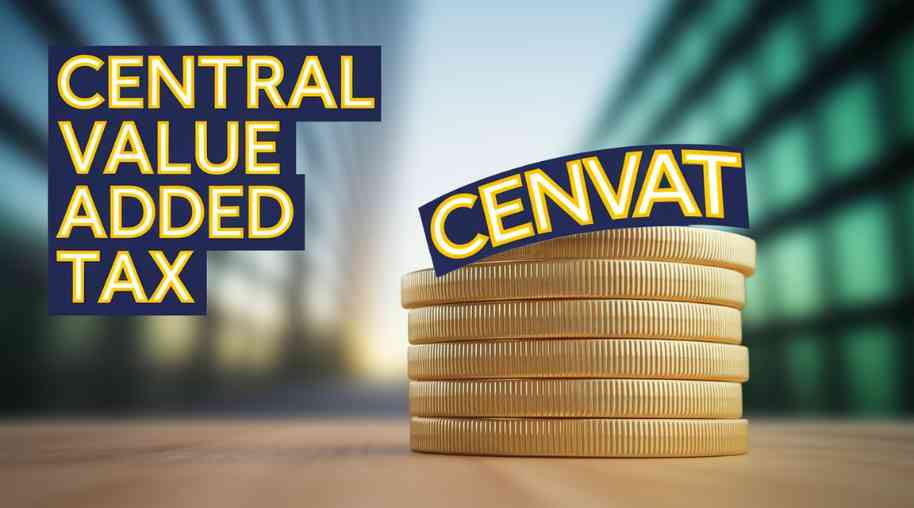CENVAT Full Form - Central Value Added Tax
by Shashi Gaherwar
0 1923
Central Value Added Tax: Understanding its Role in Modern Taxation Systems
Taxation is vital for generating revenue to support public services, infrastructure, and social programs. The Central Value Added Tax (CVAT), a key form of indirect taxation, plays a significant role in modern tax systems. Understanding CVAT’s function and implications for businesses and consumers highlights its contribution to a country’s economic framework.

This article explores the Central Value Added Tax, its significance, benefits, challenges, and its role within the broader tax system.
What is Central Value Added Tax?
The Central Value Added Tax (CVAT) is an indirect tax levied by the central government on the value added at each stage of production or distribution of goods and services. Paid by businesses on purchases, it functions as a consumption tax, with the final burden borne by the end consumer.
CVAT is applied to the difference between purchase and selling prices, ensuring businesses pay tax only on the value added. For example, if a manufacturer buys raw materials for ₹100 and sells a product for ₹200, CVAT is levied on the ₹100 value added, distributing the tax burden across the supply chain.
How Does CVAT Work?
The CVAT mechanism involves two key steps:
- Input VAT: Businesses pay input VAT on goods and services purchased for production or distribution.
- Output VAT: Businesses charge output VAT on sales, collecting it from consumers on behalf of the government.
Businesses can claim a credit for input VAT against output VAT, remitting only the difference to the government. For example, if ₹10 input VAT is paid and ₹20 output VAT is collected, only ₹10 is remitted, ensuring a transparent, efficient tax system.
Benefits of Central Value Added Tax
CVAT offers several advantages for governments and businesses:
- Revenue Generation: CVAT provides a steady revenue stream by taxing value added across transactions.
- Prevention of Tax Cascading: Input tax credits eliminate double taxation, ensuring tax is levied only on value added.
- Encourages Compliance: The credit system incentivizes accurate record-keeping, enhancing tax compliance.
- Neutrality: CVAT applies equally across sectors, fostering fairness and economic growth.
- Simplicity in Implementation: Businesses collect tax, simplifying administration for governments.
Challenges of Central Value Added Tax
Despite its benefits, CVAT faces challenges:
- Regulatory Compliance: Small businesses may struggle with record-keeping and audits due to limited resources.
- Tax Evasion and Fraud: Falsified invoices or misrepresented transactions can lead to VAT fraud.
- Impact on Small Businesses: Compliance costs can disproportionately burden small firms lacking accounting infrastructure.
- Regressive Nature: As a consumption tax, CVAT may disproportionately impact low-income individuals.
The Role of CVAT in Global Tax Systems
CVAT is a cornerstone of taxation in many countries, often complemented by state-level VAT or Goods and Services Tax (GST). In regions like the European Union and India, it drives revenue, compliance, and economic stability, supporting efficient tax collection across government levels.
The Central Value Added Tax (CVAT) is pivotal in modern taxation, ensuring fair tax collection while mitigating tax cascading. It fosters a business-friendly environment, promoting compliance and reducing fraud. Addressing challenges like compliance burdens and its regressive nature is essential for its effectiveness. With balance, CVAT supports economic growth, investment, and innovation transparently.
Further Learning Resources
If you’re passionate about building a successful blogging website, check out this helpful guide at Coding Tag – How to Start a Successful Blog. It offers practical steps and expert tips to kickstart your blogging journey!
For dedicated UPSC exam preparation, we highly recommend visiting www.iasmania.com. It offers well-structured resources, current affairs, and subject-wise notes tailored specifically for aspirants. Start your journey today!

Share:








Comments
Waiting for your comments